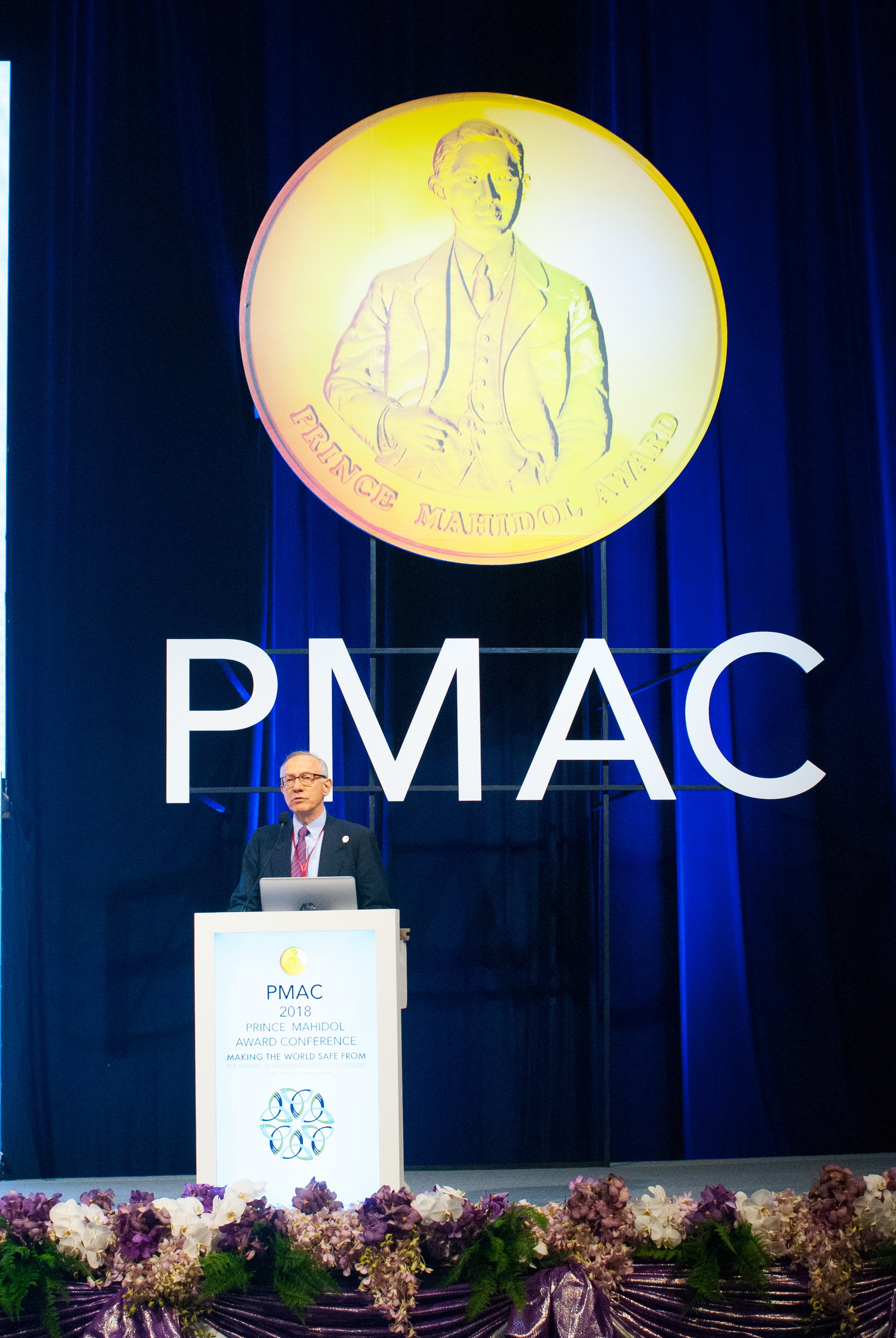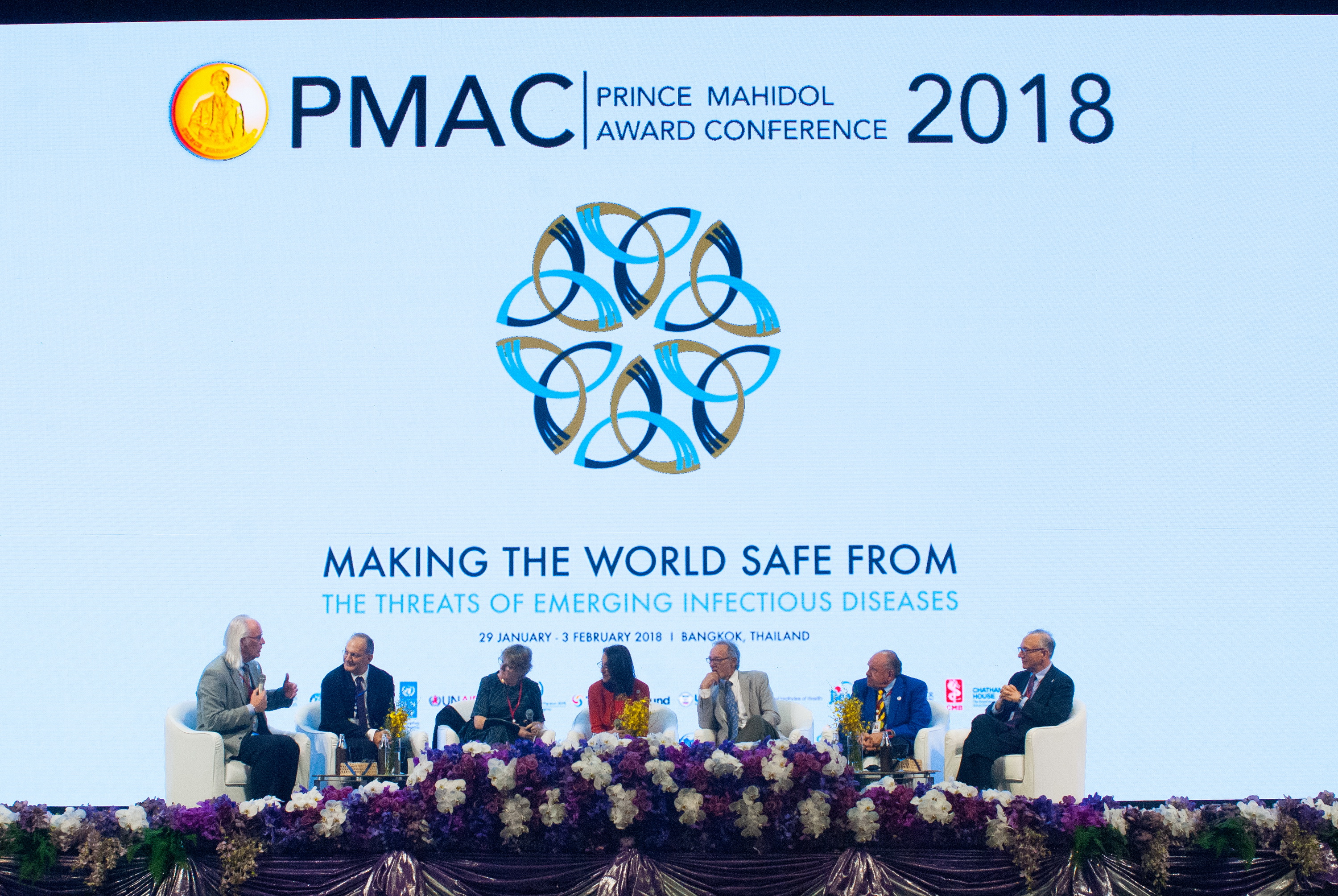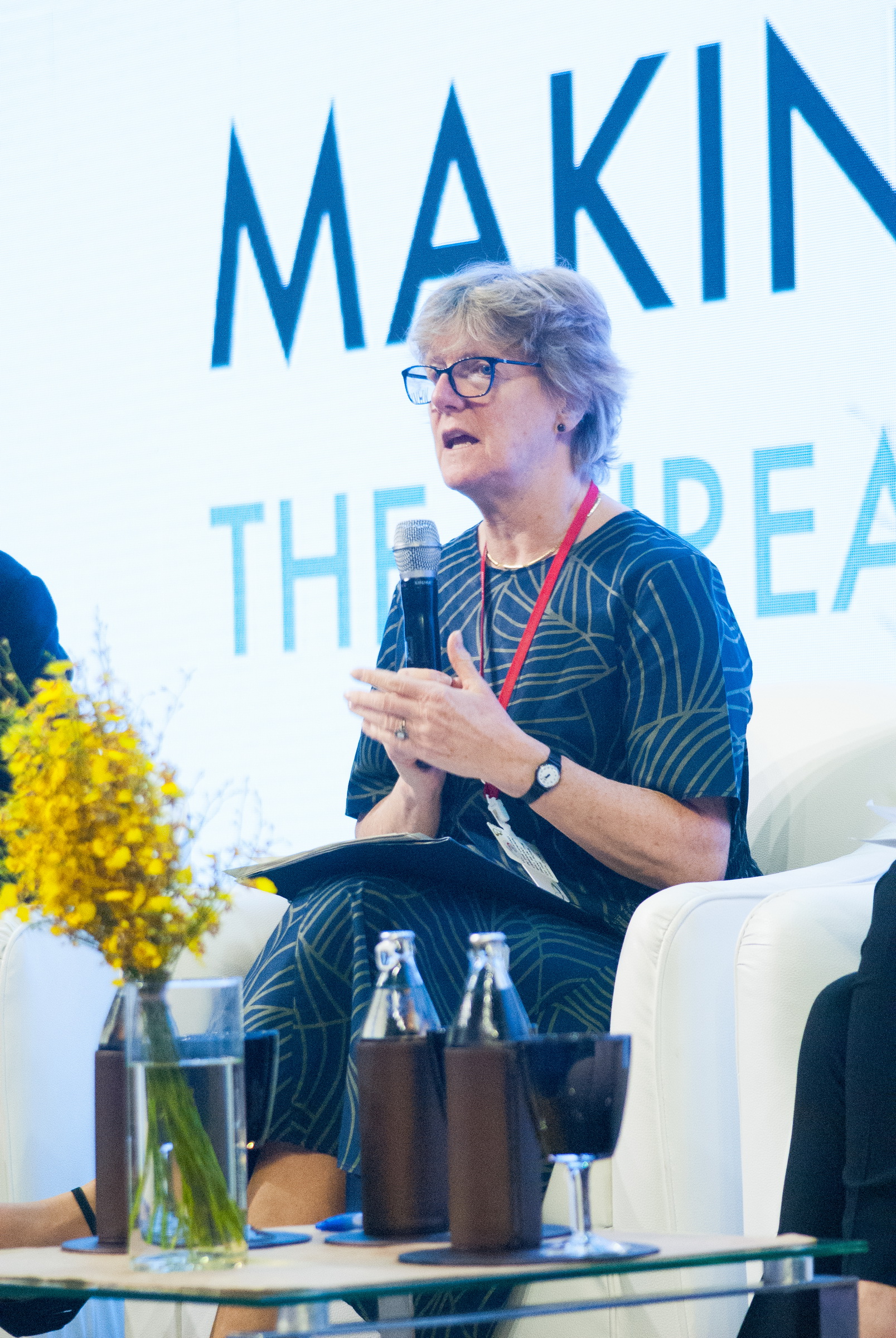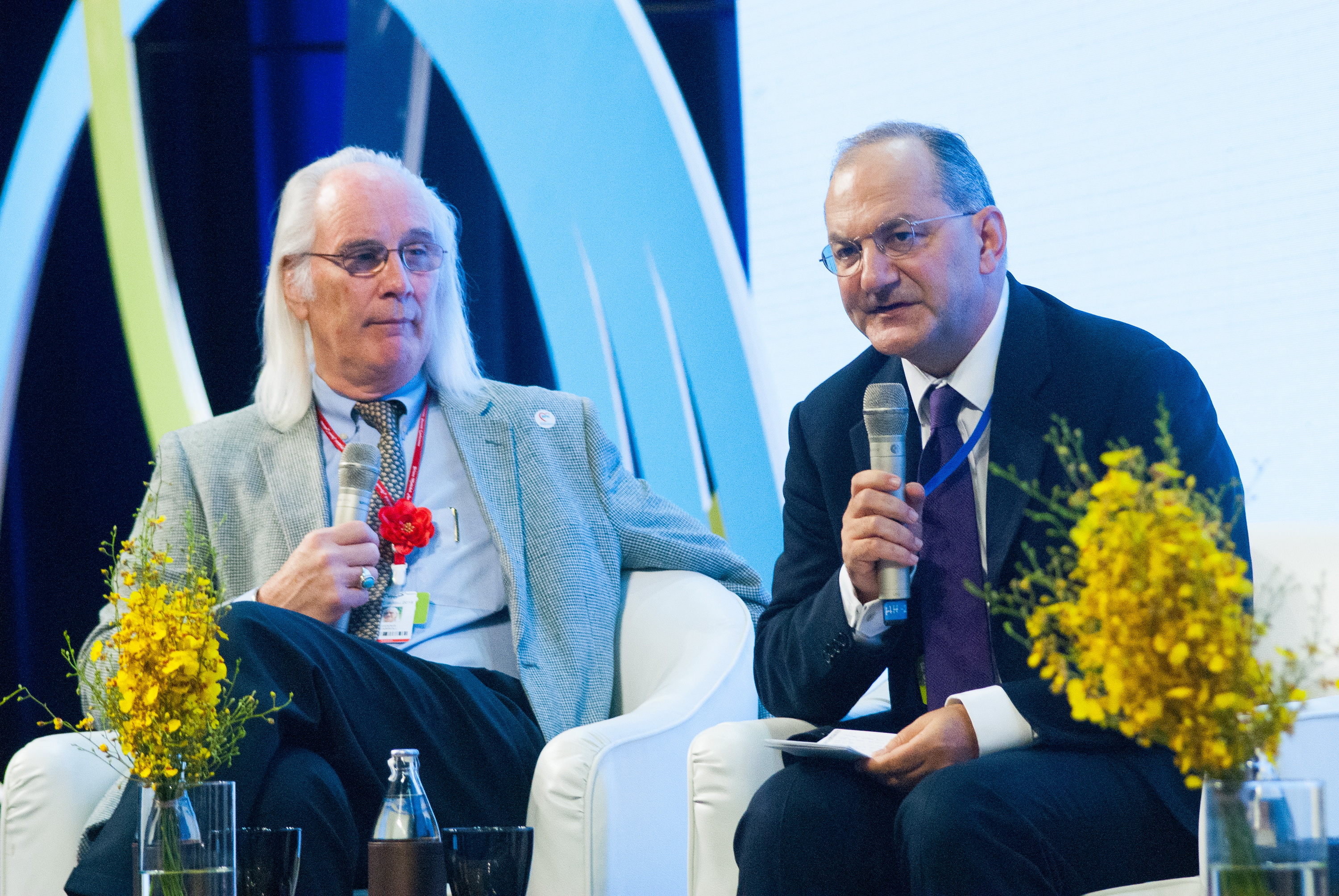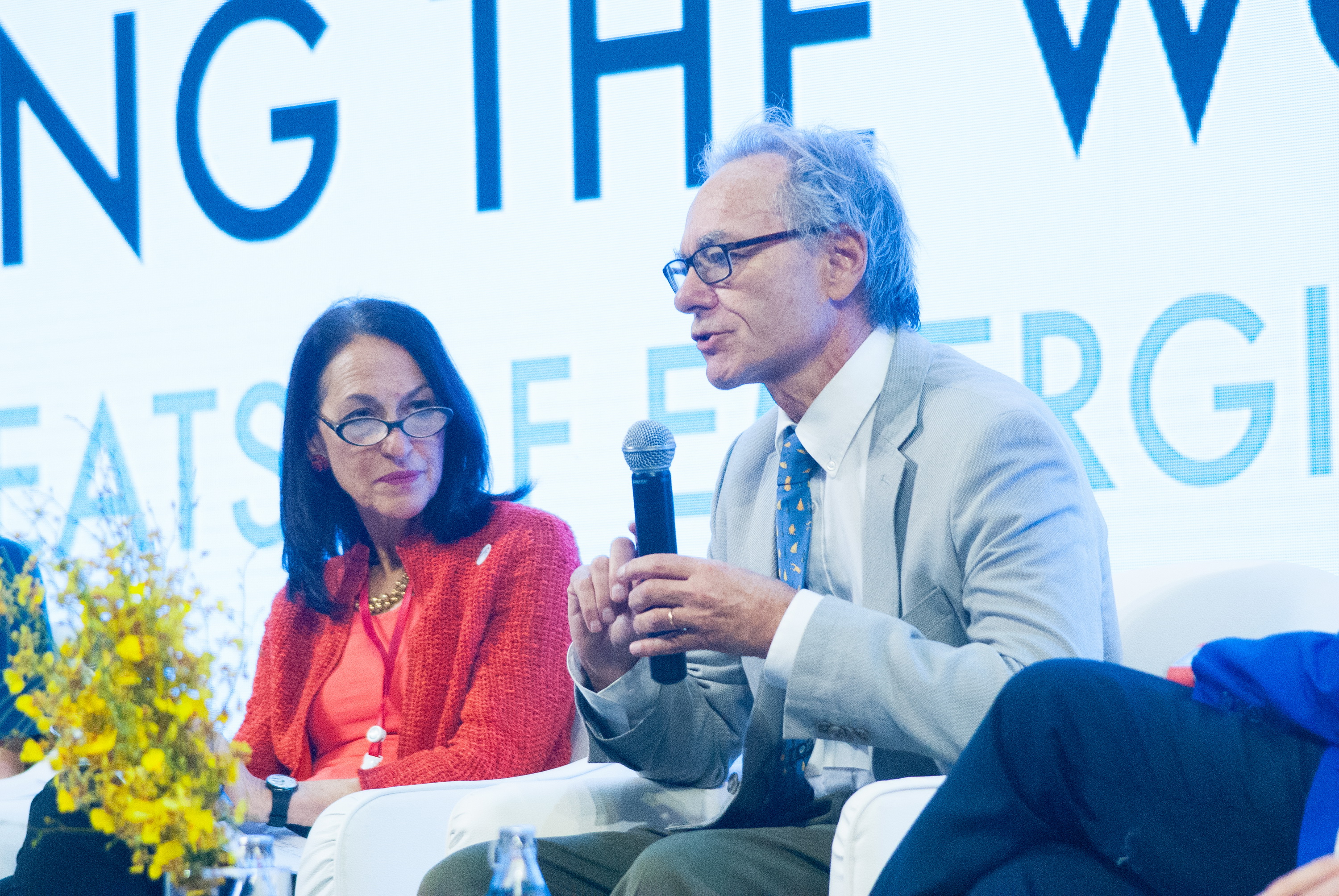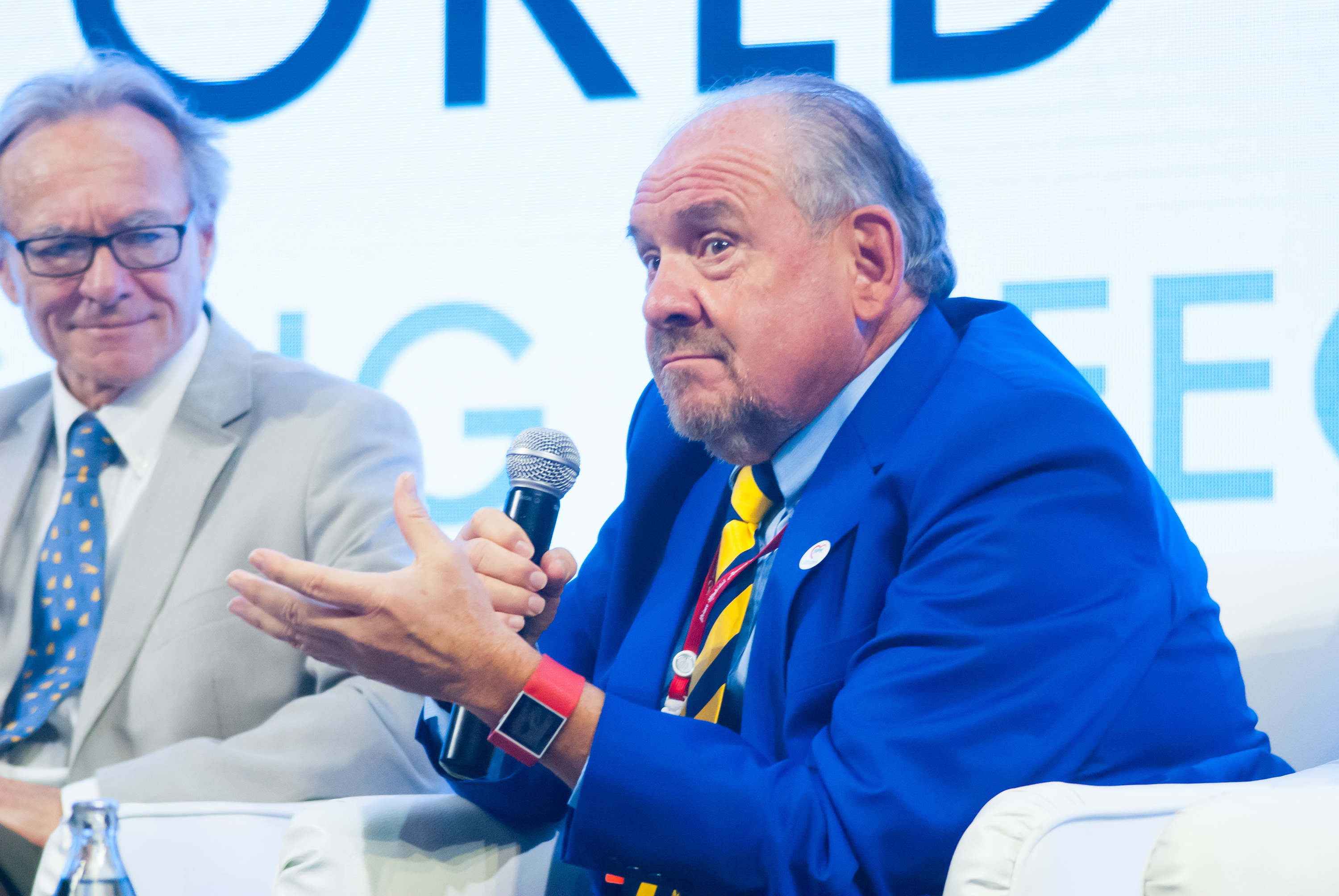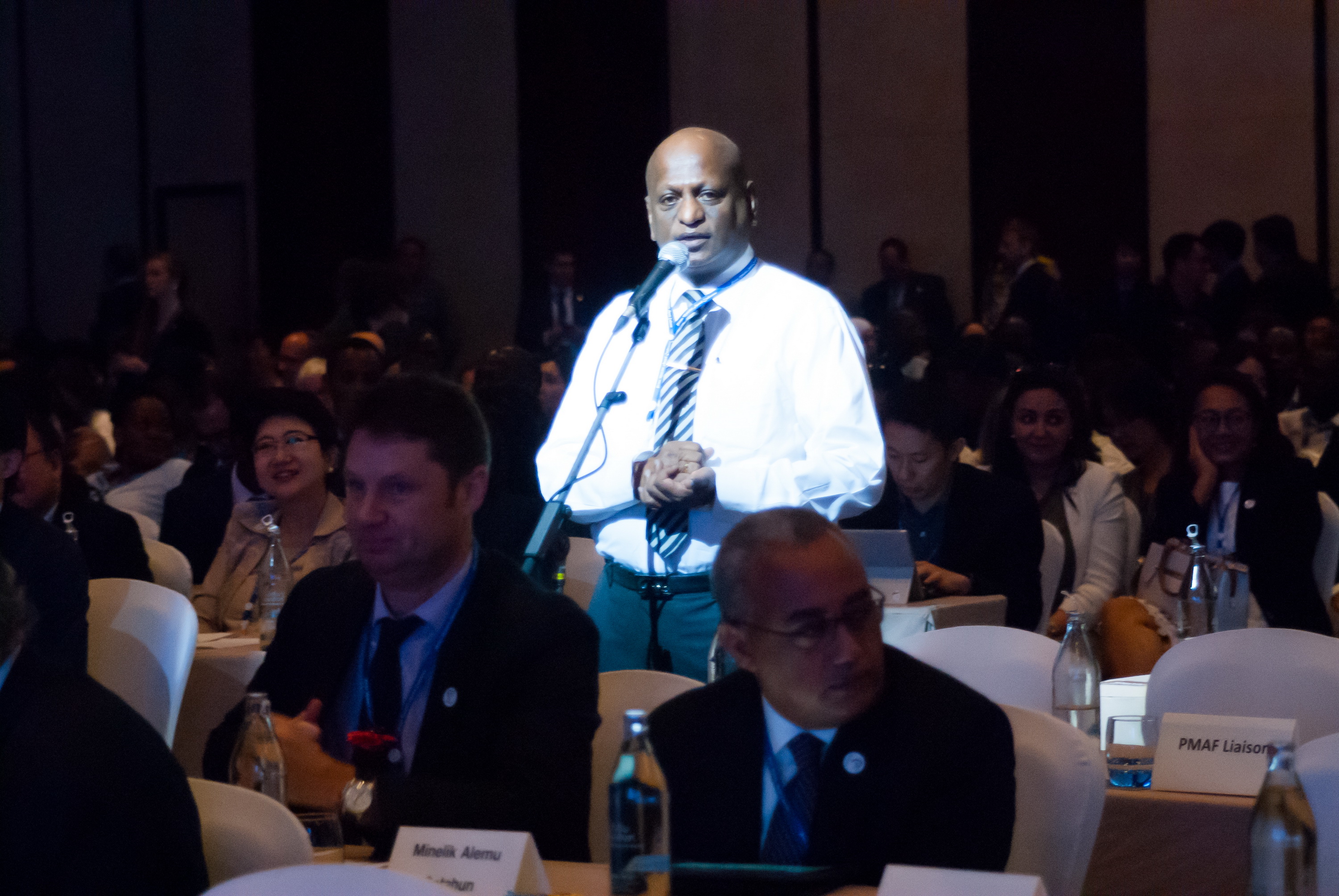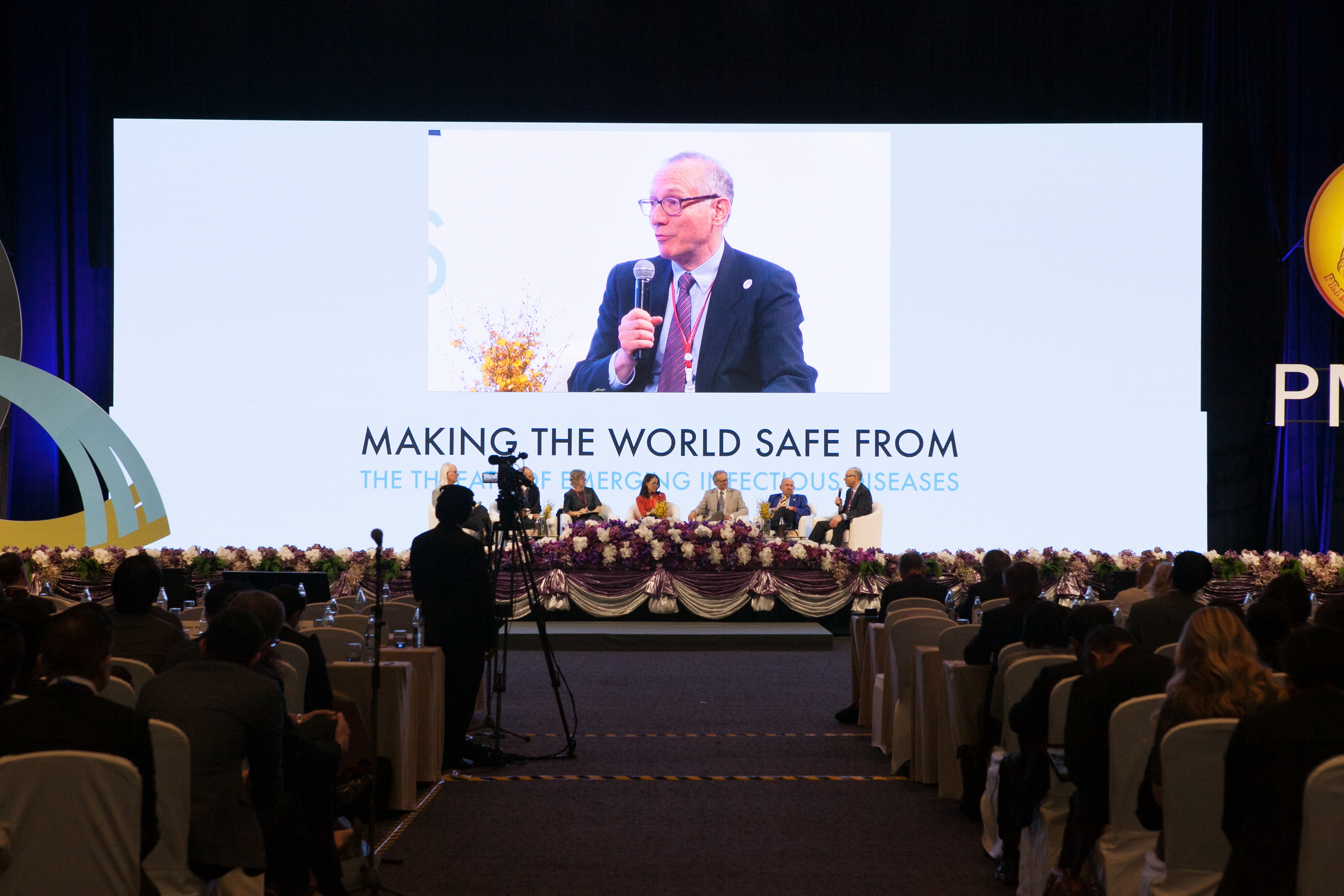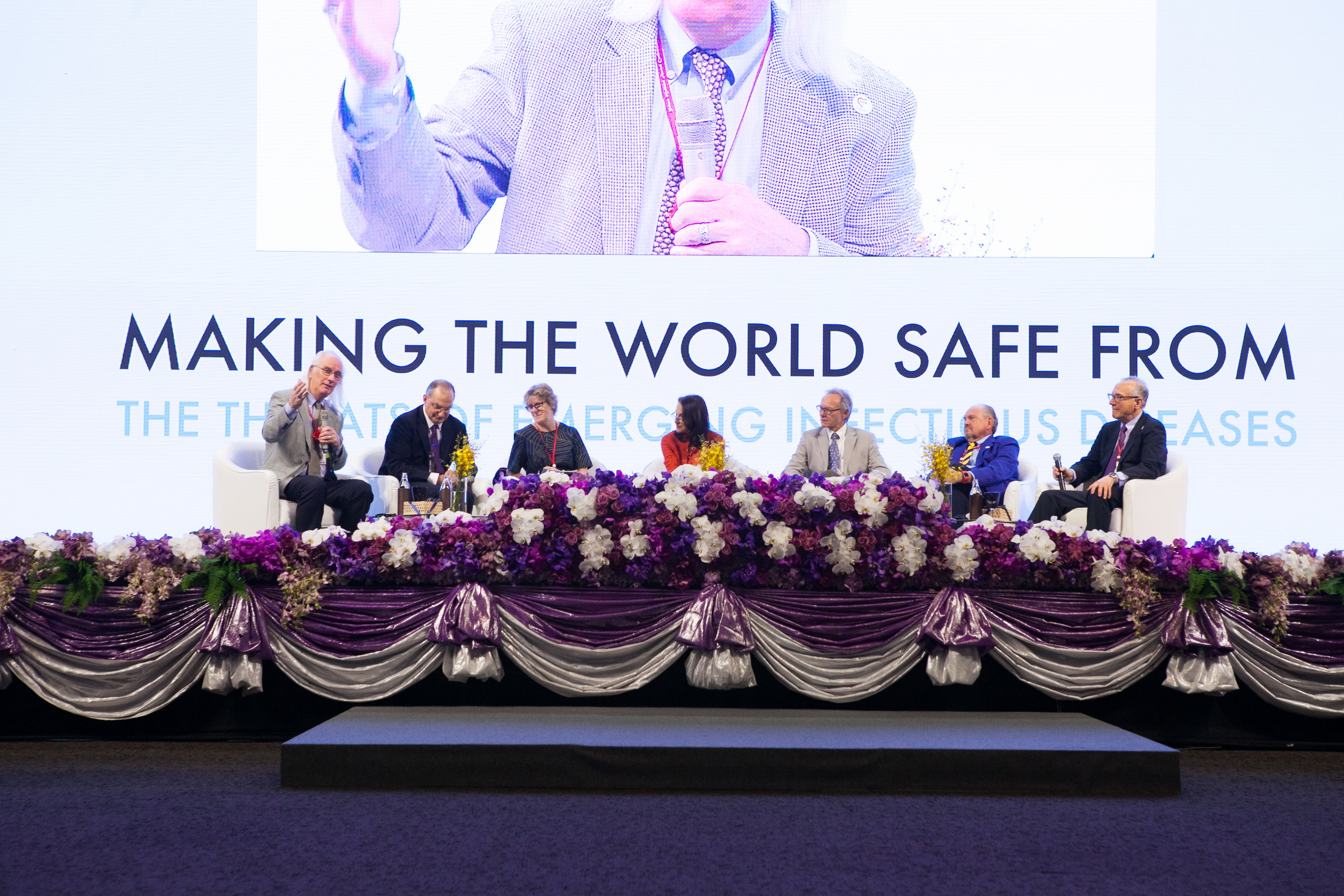Plenary Session 0
Vision 2100: Re-Imagining the End Game for the End of the Pandemic Era
1 February 2018
11:00 - 12:30 hrs.
| Venue | : | BANGKOK CONVENTION A |
BACKGROUND :
Plenary Scope: Examine how even in the face of increasing threats posed EIDs and AMR innovative approaches that harness transformative thinking allow us for the first time to imagine the end of the “pandemic era”.
Plenary Background: We live in an era when the emergence of novel infectious disease agents is posing an increasing threat to global health and security. The threat from novel infectious diseases is accelerating at a pace and with an intensity unprecedented in human history, driven by increasing human populations, climate change and surging global travel. The possibility that a single lethal microbe could suddenly emerge and sweep through every household, through every community without regard to national borders or social and economic standing is a shared fear across the globe. Just the fear can cost billions, as illustrated by recent Ebola and Zika virus panics in little-affected countries. But the reality of the threat is all too clear, proven by the decades of response to the HIV-AIDS pandemic.
Zoonotic and AMR related diseases account for more than 95% of all emerging infectious diseases reported during the second half of the 20th century.
In this century the emergence of SARS, pandemic influenza, MERS, and the spread of Ebola and Zika reflect the world’s increasing vulnerability to novel zoonotic threats. The simultaneous emergence of pathogens resistant to antibiotic therapies raises the prospect of a “post antibiotic” world. While the drivers underlying the emergence of zoonotic and antibiotic resistant diseases are complex, human behaviours and their impact on animal populations and the environment are understood to be central to the emergence of both disease threats. The role of increasing animal-human contact in the emergence of zoonotic diseases has been well documented and been increasingly the focus of One Health initiatives across the globe. The contribution made by the inappropriate use of antibiotics in animal husbandry to AMR is less well documented but in recent years has been increasingly understood to be a core driver behind the emergence and global spread of antibiotic resistant organisms, along with inappropriate “prescriber-user” practices associated with antibiotic use in clinical care. Changing environmental and climatic conditions have also been closely linked to the emergence of novel infectious diseases. That infectious disease emergence is closely associated with practices and behaviours at the animal-human-environment interface speak to the importance of an expanded multi-sectoral alliance across the animal, human and environmental sectors to address the threats posed by both zoonosis and AMR.
As we look forward towards the end of this century, the predictable escalation in the interactions between humans and animals speaks to a world of increasing global risk. The consequences of these trends, however, are avoidable. Success in “making the world safe from the threats of emerging infectious diseases” requires we think and act differently; to not continue with the half-measures that have made the world ill prepared to address these threats.
Rapid advances in science and a corresponding revolution in technologies allow us, for the first time, to imagine a world where these “threats” can be minimized. What is required is bold action; that embraces an aggressive time horizon; and, that is global in scope. Such action can build systems and capacities able to mitigate the emergence of future threats and to control them when they do. With this knowledge comes the power to end panic and move to prevention.
This Plenary will present and discuss examples of new, innovative and bold global ventures which are now laying the groundwork for the “beginning of the end of the Pandemic Era”.
1 K. E. Jones et al., Global trends in emerging infectious diseases. Nature 451, 990-993 (2008).
OBJECTIVES :
- Explore novel and transformative approaches that address the underlying drivers of zoonotic disease and AMR
- Harness methodologies, technologies, and thinking across a range of disciplines to promote a vision for a proactive approach to emerging zoonoses and AMR
- Enable a conversation that transcends current impediments and envisions possible pathways and enabling factors to realize the end of the “pandemic era”
Moderator
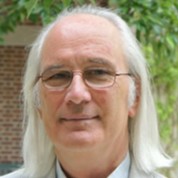
Dennis Carroll
Pandemic Influenza and Other Emerging Threats Unit Director
United States Agency for International Development
United States of America
Keynote Speaker

Harvey Fineberg
President
The Gordon and Betty Moore Foundation
United States of America
Panelist

Eddy Rubin
Chief Scientific Officer
Metabiota
United States of America

Larry Brilliant
Chairman
Larry's Personal
United States of America

Margaret Hamburg
President
American Association for the Advancement of Science
United States of America

Peter Salama
Deputy Director General for Emergency Preparedness and Response
World Health Organization
Switzerland

Sally Davies
Chief Medical Officer
Department of Health
United Kingdom
Documents
Biosketch:
Gallery


